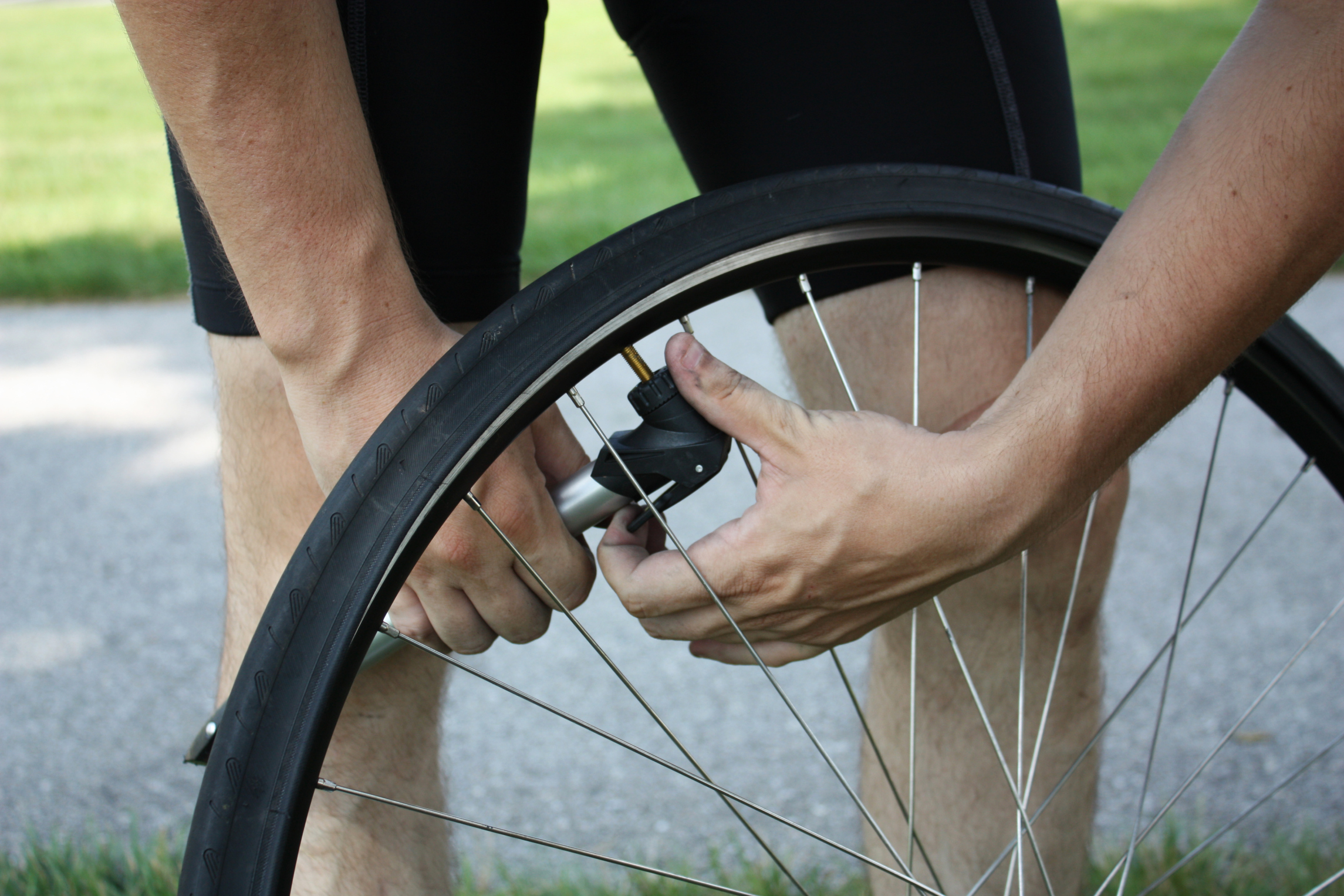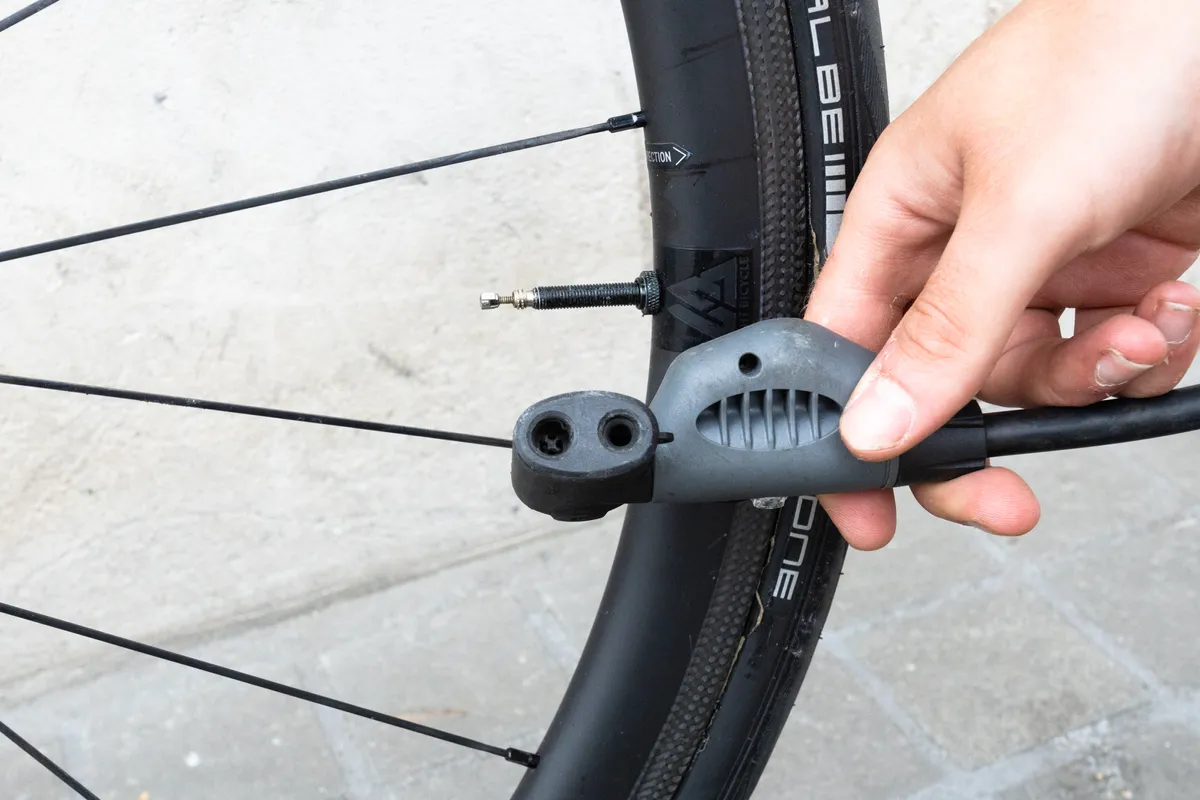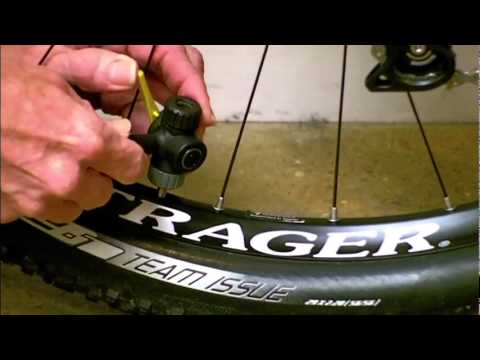To pump a bike tire with a Presta valve, first, unscrew the valve cap and open the valve. Then, attach the pump and inflate.
Pumping a bike tire with a Presta valve is essential for maintaining optimal tire pressure and a smooth ride. Presta valves are commonly found on road bikes and some mountain bikes due to their narrow design. Understanding how to correctly pump these tires ensures safety and performance.
You’ll need a compatible pump or an adapter to fit the Presta valve. Learning this simple task can save you time and money on maintenance. By mastering this skill, you can confidently handle tire inflation anywhere, ensuring you’re always ready for the road or trail.
Introduction To Presta Valves
Presta valves are common on road and mountain bikes. They are tall and thin, making them easy to spot. These valves are different from the wider Schrader valves. Understanding these valves helps keep your bike tires in good shape.
Unique Features Of Presta Valves
Presta valves have some unique features. First, they are much narrower than Schrader valves. This makes them perfect for high-pressure tires. Second, they have a lock nut at the top. You need to unscrew this nut before pumping air.
Another unique feature is their two-part construction. The outer part is the valve stem, and the inner part is the valve core. This design helps keep air inside the tire for longer periods.
| Feature | Description |
|---|---|
| Narrow Stem | Perfect for high-pressure tires |
| Lock Nut | Secures the valve before pumping |
| Two-Part Construction | Keeps air inside the tire longer |
Why Choose Presta Over Schrader
Many cyclists prefer Presta valves over Schrader. Here are some reasons:
- Better for high-pressure tires
- Lighter
- Easier to fit in narrow rims
- More secure
Presta valves can handle higher pressures. This is why they are common on road bikes. They are also lighter, which helps with overall bike weight. Their narrow design fits better in narrow rims. This makes them suitable for racing bikes.
Lastly, the lock nut ensures that the valve stays closed. This helps prevent air from leaking out. These features make Presta valves a popular choice for many cyclists.

Essential Tools For Inflation
Inflating a bike tire with a Presta valve requires specific tools. These tools ensure that the process is smooth and the tire reaches the correct pressure. Below are the essential tools you need for effective inflation.
Selecting The Right Pump
Choosing the correct pump is crucial. A pump with a Presta-compatible head is necessary. This pump fits the smaller Presta valve perfectly.
Floor pumps are perfect for home use. They offer better stability and power. For on-the-go inflation, a mini pump is suitable. It’s compact and easy to carry.
Some pumps come with a dual-head feature. This allows them to fit both Presta and Schrader valves. This feature adds versatility to your tool kit.
Using A Gauge For Accurate Pressure
A pressure gauge ensures your tires are inflated correctly. Over-inflated or under-inflated tires can cause problems. A gauge helps you avoid these issues.
Many pumps come with a built-in gauge. This is convenient and ensures accurate readings. If your pump doesn’t have one, consider buying a separate gauge.
Digital gauges provide precise readings. They are easy to use and read. Analog gauges are also reliable and often more durable. Choose one based on your preference.
| Tool | Features |
|---|---|
| Floor Pump | Stable, powerful, perfect for home use |
| Mini Pump | Compact, portable, great for travel |
| Pressure Gauge | Ensures accurate tire pressure |
| Dual-Head Pump | Compatible with Presta and Schrader valves |
| Digital Gauge | Precise, easy to read |
| Analog Gauge | Reliable, durable |
Having these tools makes inflating a Presta valve tire easy. Remember to check your tire pressure regularly. This ensures a smooth and safe ride.
Pre-inflation Checklist
Before pumping your bike tire, follow this pre-inflation checklist. This ensures your tire is safe and your ride is smooth.
Checking Tire Condition
First, check your tire for wear and damage. Look for cuts, cracks, or bulges. If you find any, replace the tire.
Next, ensure the tire tread is not worn out. A worn-out tread reduces grip and increases the risk of punctures.
Inspecting The Presta Valve
Inspect the Presta valve for any dirt or debris. Clean it gently with a cloth if needed.
Ensure the valve is straight and not bent. A bent valve can cause air leaks.
Check the valve cap. Make sure it’s present and tightly secured. It protects the valve from dirt and damage.

Step-by-step Inflation Process
Pumping a bike tire with a Presta valve can be tricky. Follow these steps to make it easy. This guide will help you inflate your tire correctly.
Opening The Valve
First, locate the Presta valve on your tire. It is thinner than other valves. Unscrew the small cap at the top.
- Turn the cap counterclockwise.
- Do not remove the cap completely.
- Press the valve to release a short burst of air.
Attaching The Pump
Next, attach the pump to the Presta valve. Ensure the pump head matches the valve type.
- Open the pump lever, if it has one.
- Place the pump head over the valve.
- Secure the pump by closing the lever.
Pumping To The Correct Pressure
Now, start pumping air into the tire. Use a pressure gauge to check the pressure.
| Pressure Type | Recommended Range |
|---|---|
| Road Bike | 80-130 psi |
| Mountain Bike | 30-50 psi |
- Pump until you reach the desired pressure.
- Stop pumping to check the pressure frequently.
- Do not over-inflate the tire.
Finally, remove the pump and close the valve. Tighten the cap to secure it.
Common Mistakes To Avoid
Pumping a bike tire with a Presta valve can be tricky. Many cyclists make mistakes that can cause problems. Let’s look at some common mistakes to avoid.
Overinflation Risks
Overinflation is a common mistake. It can damage your bike tire. Here are some risks:
- Tire bursts
- Damage to the inner tube
- Less grip on the road
Always check the recommended pressure. You can find it on the tire’s sidewall. Use a pressure gauge to ensure accuracy.
Improper Valve Handling
Handling the valve improperly can lead to issues. Follow these steps to avoid mistakes:
- Unscrew the small cap on the Presta valve.
- Press the valve tip to release any air.
- Attach the pump securely.
- Pump the tire to the correct pressure.
- Remove the pump carefully.
- Tighten the valve cap again.
Be gentle with the valve. It is fragile and can bend or break easily. Always handle it with care.

Aftercare And Maintenance
After inflating your bike tire with a Presta valve, proper aftercare is essential. This ensures your tire remains in good condition and prolongs its lifespan. Maintenance is key to a smooth ride and preventing future issues.
Post-inflation Valve Care
Once the tire is inflated, secure the Presta valve. First, screw the valve cap back on. This keeps dirt and moisture out. Dirt can damage the valve over time. Moisture can lead to rust.
Check the valve for leaks. Listen for any hissing sounds. Apply soapy water to the valve tip. Watch for bubbles to detect leaks. Tighten the valve core if necessary.
Ensure the valve is straight. A bent valve can cause air leaks. It can also make future inflation difficult. Gently straighten the valve if needed.
Regular Maintenance Tips
Regular maintenance keeps your bike tire in top shape. Here are some simple tips:
- Check tire pressure: Use a pressure gauge weekly. Maintain the recommended pressure.
- Inspect the tire: Look for cuts, punctures, or wear. Replace the tire if it’s damaged.
- Clean the valve: Wipe the valve with a clean cloth. This removes dirt and debris.
- Lubricate the valve: Apply a drop of oil to the valve. This ensures smooth operation.
Perform these tasks regularly. This helps avoid unexpected issues on the road.
Here’s a quick maintenance checklist:
| Task | Frequency |
|---|---|
| Check tire pressure | Weekly |
| Inspect tire for damage | Monthly |
| Clean valve | After each ride |
| Lubricate valve | Monthly |
Following these aftercare and maintenance tips ensures a safe and enjoyable ride. Happy cycling!
Frequently Asked Questions
How Do I Inflate A Tire With A Presta Valve On It?
To inflate a tire with a Presta valve, first unscrew the valve cap. Press the valve to release any air. Attach the pump head securely. Inflate to the desired pressure. Remove the pump and screw the valve cap back on.
How To Use A Bike Pump Presta Valve?
To use a bike pump with a Presta valve, first unscrew the valve cap. Press the pump head onto the valve and secure it. Pump until the desired pressure is reached, then remove the pump and tighten the valve cap.
Do You Need A Special Pump To Inflate A Presta Valve?
You don’t need a special pump for a Presta valve, but you may need an adapter for standard pumps.
How To Pump Up A Presta Valve Without An Adapter?
Unscrew the Presta valve cap. Loosen the valve by turning the top counterclockwise. Press the pump head onto the valve, ensuring a tight seal. Inflate the tire by pumping as usual. After reaching the desired pressure, remove the pump and tighten the valve.
How Do You Pump A Presta Valve?
First, unscrew the small cap on the valve. Attach the pump, then inflate to the desired pressure.
Conclusion
Pumping a bike tire with a Presta valve is simple with the right steps. Ensure your pump fits the valve. Follow the steps carefully to avoid air leaks. Regularly check your tire pressure for a smooth ride. Master this skill to keep your bike ready for any adventure.
Happy cycling!





















